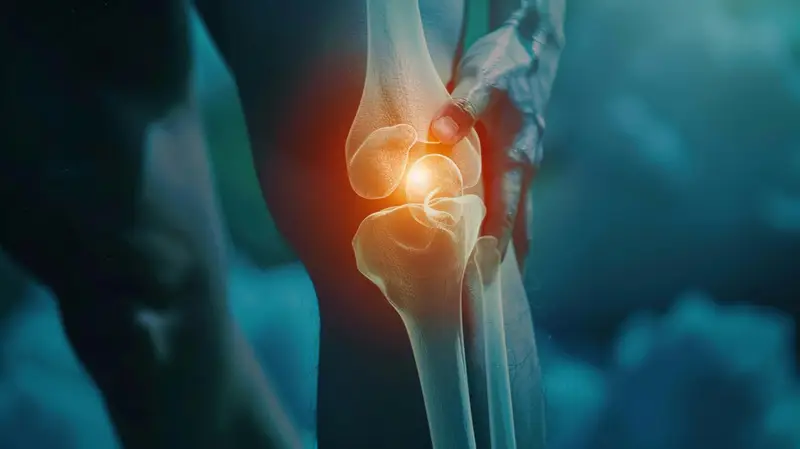Read Blog 
How Robotic Joint Replacement Works: Separating Myths from Facts
Joint replacement surgery has evolved significantly in recent years, and one of the most exciting advancements is the integration of robotic technology. While robotic joint replacement offers many benefits, there are also several myths and misconceptions that can create confusion. In this blog, we’ll explore how robotic joint replacement works and debunk common myths to help you make informed decisions about your health.
What is Robotic Joint Replacement?
Robotic joint replacement surgery uses advanced robotic systems to assist surgeons in performing joint replacement procedures. These systems are designed to enhance precision, improve outcomes, and speed up recovery. The technology helps surgeons plan and execute surgeries with greater accuracy than traditional methods.
How Does Robotic Joint Replacement Work?
1. Preoperative Planning
The process begins with detailed preoperative planning. Surgeons use advanced imaging techniques such as CT scans or MRIs to create a 3D model of the patient’s joint. This model helps in planning the optimal placement of the joint implant.
2. Robotic Assistance During Surgery
During the surgery, the robotic system assists the surgeon by providing real-time data and guidance. The robot does not perform the surgery on its own but works alongside the surgeon to ensure precise alignment and placement of the implant. The robotic arm helps in guiding the surgical instruments with high accuracy, reducing the risk of human error.
3. Enhanced Precision
The robotic system’s enhanced precision allows for more accurate alignment of the joint implant, which can lead to better function and longer-lasting results. The robot’s ability to make fine adjustments helps ensure that the implant fits perfectly within the patient’s anatomy.
4. Postoperative Monitoring
After the surgery, the robot’s data can be used to monitor the success of the procedure and track the patient’s progress. This information helps in tailoring postoperative care and rehabilitation to the patient’s specific needs.
Common Myths About Robotic Joint Replacement
1. Myth: Robots Perform the Surgery Independently
Fact: Robotic systems are designed to assist, not replace, the surgeon. The robot follows the surgeon’s instructions and provides additional precision and control. The surgeon remains in full control of the procedure and makes all critical decisions.
2. Myth: Robotic Surgery is More Dangerous Than Traditional Surgery
Fact: Robotic joint replacement has been shown to be as safe as, if not safer than, traditional methods. The enhanced precision and reduced risk of complications can lead to better outcomes and fewer postoperative issues. Surgeons undergo extensive training to operate robotic systems safely.
3. Myth: Robotic Joint Replacement is Only for Certain Patients
Fact: Robotic joint replacement is suitable for a wide range of patients, including those with various degrees of joint damage and arthritis. The decision to use robotic technology depends on the surgeon’s recommendation and the patient’s specific condition.
4. Myth: Robotic Joint Replacement is More Painful
Fact: The minimally invasive nature of robotic joint replacement often results in less postoperative pain compared to traditional methods. The precise placement of the implant can also contribute to quicker recovery times and reduced discomfort.
5. Myth: Robotic Surgery Guarantees Perfect Results
Fact: While robotic systems enhance precision and improve outcomes, they do not guarantee perfect results. The success of the surgery depends on various factors, including the patient’s overall health, adherence to postoperative care, and the surgeon’s expertise.
Benefits of Robotic Joint Replacement
1. Increased Accuracy
Robotic systems provide real-time feedback and guidance, allowing for highly accurate implant placement. This precision can lead to improved joint function and reduced wear and tear on the implant.
2. Reduced Recovery Time
Many patients experience faster recovery times with robotic joint replacement due to the minimally invasive approach and precise placement of the implant. This can lead to a quicker return to daily activities and a higher quality of life.
3. Less Postoperative Pain
The minimally invasive nature of the surgery typically results in less postoperative pain and discomfort. Smaller incisions and reduced tissue damage contribute to a more comfortable recovery process.
4. Customized Treatment
The 3D imaging and preoperative planning allow for a highly customized surgical approach tailored to the patient’s unique anatomy. This personalized treatment can lead to better outcomes and improved satisfaction.
Conclusion
Robotic joint replacement represents a significant advancement in orthopedic surgery, offering enhanced precision, reduced recovery times, and improved outcomes. By separating myths from facts, we can better understand the true benefits and limitations of this technology. If you’re considering joint replacement surgery, discussing the option of robotic assistance with your orthopedic surgeon can help you make an informed decision that aligns with your needs and goals.
Robotic joint replacement is not a one-size-fits-all solution but a valuable tool that, when used appropriately, can enhance the surgical process and improve patient outcomes. Embrace the future of joint replacement with confidence and clarity, knowing that robotic technology is here to support your journey to better joint health.










